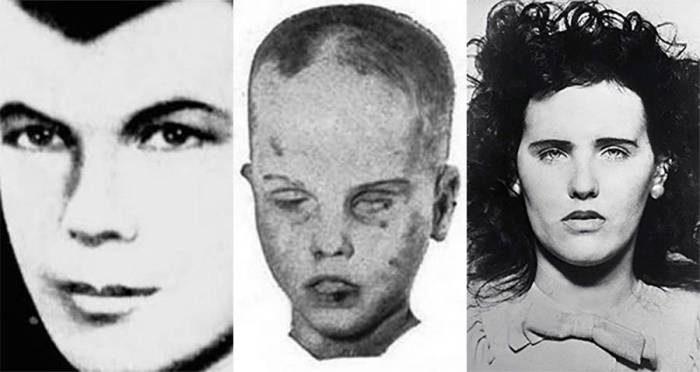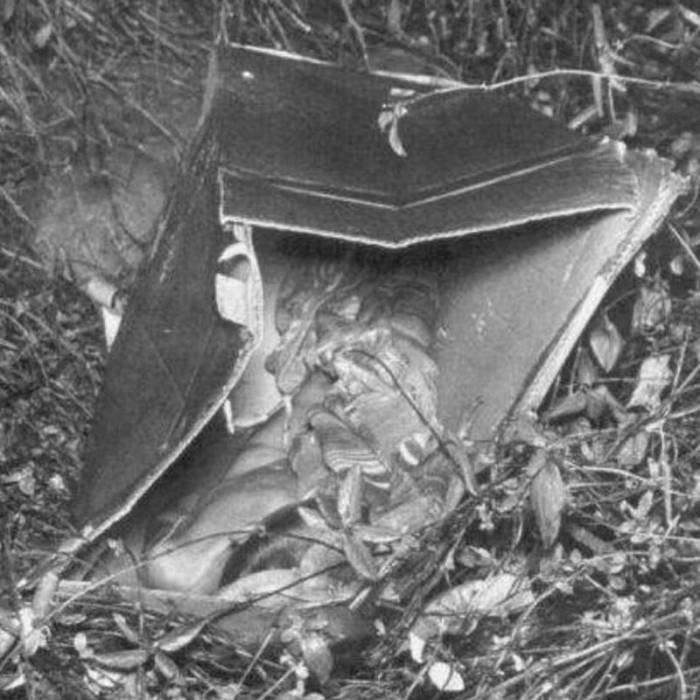
True crime cases solved offer a fascinating glimpse into the darker side of human nature, where investigations reveal the truth behind notorious crimes. These cases not only captivate the public’s interest but also showcase the relentless pursuit of justice by law enforcement and the power of forensic science.
As we explore notable true crime cases, we’ll discover how investigative methods and media influence have shaped public perception, all while delving into the psychological profiles of offenders. Together, these elements create a compelling narrative that highlights the complexity of solving crimes and the impact on society.
Notable True Crime Cases Solved

The field of true crime is rife with captivating stories of mystery, investigation, and resolution. This narrative not only highlights the darker elements of human nature but also showcases the remarkable skills of law enforcement and forensic science in solving complex cases. Below, we delve into three notable true crime cases that were successfully resolved, exploring the timeline of events, investigative methods employed, and the pivotal role of forensic science.
Case of the Golden State Killer
The Golden State Killer, a notorious criminal linked to over 50 rapes and 12 murders across California from 1976 to 1986, evaded capture for decades. The case underwent a significant breakthrough in April 2018 when law enforcement announced the arrest of Joseph James DeAngelo, largely due to advancements in forensic genealogy. The timeline of key events began with the first documented attack, culminating in DeAngelo’s arrest, which was made possible through a combination of traditional investigative work and innovative forensic techniques.Forensic genealogy played a crucial role in identifying DeAngelo.
Investigators uploaded DNA evidence from the crime scenes to a public genealogy website, which then helped them trace potential relatives. This method marked a revolutionary approach in crime-solving, bridging gaps that traditional techniques could not fill. The combination of familial DNA matches and good old-fashioned detective work ultimately led to the successful apprehension of the suspect.
Scott Peterson and the Murder of Laci Peterson
In 2002, the case of Laci Peterson captured national attention when the pregnant woman went missing on Christmas Eve. The case escalated quickly, with searches conducted in the bay where her body was eventually found. The timeline includes the initial report of her disappearance, the media frenzy that ensued, and the eventual arrest of her husband, Scott Peterson, in April 2003.
Law enforcement utilized various investigative techniques, including extensive searches and the collection of evidence from the area. The forensic examination of the remains, recovered in April 2003, provided critical insights into the circumstances surrounding Laci’s death. Pathology reports and forensic entomology, which studies insect activity on decomposing bodies, were instrumental in establishing the timeline of her death. The meticulous gathering of evidence and the application of forensic science ultimately led to Peterson’s conviction in 2004.
Case of the Atlanta Child Murders
Between 1979 and 1981, Atlanta was shaken by a series of murders involving children and young adults. The timeline of this tragic case includes the discovery of several victims and the ensuing investigations that struggled to connect the dots. It wasn’t until the arrest of Wayne Williams in 1981 that hope for resolution emerged, culminating in a trial that garnered nationwide attention.The investigative methods used included a robust community outreach program to gather information and witness testimonies.
Additionally, forensic science played a vital role, particularly through fiber analysis. Investigators discovered that fibers found on the victims closely matched those from Williams’ home and car. This crucial evidence contributed significantly to establishing his guilt. The use of forensic fiber analysis exemplified how scientific methods could unravel complex cases, leading to a resolution that brought some closure to the affected families and the community.
Impact of Media on True Crime Cases

The role of media in true crime cases has evolved significantly over the years, influencing public perception and the investigative process. From sensationalized headlines to in-depth documentaries, the way stories are presented can sway public opinion, impact ongoing investigations, and even lead to the reopening of cold cases. Understanding the effects of media on these narratives provides insight into the ethical considerations and the potential for positive outcomes in criminal justice.Media coverage can create a narrative around true crime cases that shapes public perception.
In several notable cases, the emphasis on certain aspects by the media has led to increased public interest and pressure on law enforcement to find answers. This can sometimes result in a rush to judgment or the misrepresentation of facts, distorting the actual circumstances of the crime. The presence of cameras and reporters can also complicate the investigation process, as suspects may feel a heightened sense of scrutiny and potential bias from the public.
Influence of Sensationalism on Public Perception
Sensationalism in the media can distort the public’s understanding of crime and justice. The pursuit of ratings often leads to exaggerated portrayals of events, which can perpetuate stereotypes and fear. When a crime is sensationalized, it can trigger a variety of responses from the public, including outrage, fear, or even fascination.
-
The focus on graphic details can lead to desensitization towards violence.
The more gruesome the details reported, the more the audience may become desensitized to the realities of crime.
-
Victim narratives may overshadow the complexities of the case.
When the media highlights the victim’s story without delving into the intricacies of the investigation, it can create a simplistic view of the events.
-
Public pressure can influence investigative priorities.
Media coverage can lead to increased demands for justice from the public, pushing law enforcement to allocate resources and attention to high-profile cases.
Documentaries and Podcasts in Solving Cold Cases
In recent years, the rise of true crime documentaries and podcasts has opened new avenues for addressing cold cases and bringing attention to unsolved crimes. These mediums allow for a deep dive into cases that may have otherwise faded from public interest. They not only entertain but also educate the audience about the complexities of the criminal justice system.The impact of these formats can be significant, as seen in several high-profile cases.
For instance, the podcast “Serial” reignited interest in the 1999 murder of Hae Min Lee, leading to renewed scrutiny of the evidence against Adnan Syed. Similarly, the Netflix documentary “The Keepers” shed light on the unsolved murder of Sister Cathy Cesnik, sparking public outcry and prompting law enforcement to reevaluate the case.
-
Engagement through storytelling can mobilize community actions.
Engaging narratives can inspire listeners to advocate for justice or provide tips that can lead to breakthroughs in investigations.
-
Increased visibility through media can attract new evidence or leads.
As stories gain traction, new witnesses may come forward, revealing crucial information previously unknown to investigators.
-
Re-examination of cases through newer forensic techniques.
Documentaries often highlight advancements in forensic science that may apply to old cases, encouraging law enforcement to revisit them.
Psychological Profiles of True Crime Offenders
Understanding the psychological profiles of true crime offenders provides vital insights into criminal behavior, aiding investigations and enhancing public awareness. By analyzing the characteristics commonly found in these individuals, investigators can form profiles that help them identify potential suspects and understand their motives. This exploration delves into the traits often exhibited by offenders, the psychological theories that explain their behaviors, and a comparison of different offender profiles from various solved cases.
Characteristics of True Crime Offenders
Various psychological traits and characteristics are often identified in true crime offenders, which can assist investigators in narrowing down suspect lists. Common traits include:
- Lack of Empathy: Many offenders show an inability to empathize with others, which can lead to violent behavior.
- Impulsivity: A tendency toward impulsive actions can result in spontaneous criminal acts without forethought of the consequences.
- Low Self-Control: Offenders frequently exhibit poor self-regulation, impacting their ability to manage emotions and behaviors.
- Narcissism: Many criminals display narcissistic traits, believing they are above the law and entitled to act on their desires.
Recognizing these traits can provide critical context to investigators, allowing them to anticipate behaviors and understand the motivations behind the crimes.
Psychological Theories Explaining Criminal Behavior
Several psychological theories have been proposed to understand criminal behavior observed in notable cases. These theories offer valuable insights into why individuals may commit crimes and how their minds function:
- Strain Theory: Suggests that societal pressures and expectations can lead individuals to commit crimes when they feel unable to achieve societal goals through legitimate means. A notorious case that exemplifies this is the story of Gary Gilmore, who felt immense pressure to succeed but resorted to crime when he perceived failure.
- Social Learning Theory: Proposes that individuals learn behaviors through observation and imitation. The actions of criminal role models can inspire others to engage in similar acts, as seen in gang-related crimes.
- Attachment Theory: Indicates that a person’s early relationships and attachments can impact their ability to form healthy connections later in life. Offenders like Jeffrey Dahmer often exhibit insecure attachment styles, leading to difficulties in interpersonal relationships.
Understanding these theories supports investigators in comprehending the mindset of offenders and the societal factors that contribute to criminal behavior.
Comparative Analysis of Offender Profiles
When examining various solved cases, patterns and trends emerge among different offender profiles, providing a clearer picture of criminal behavior. For instance, serial killers often share certain characteristics, including:
- Female Victims Preference: Many male serial killers, such as Ted Bundy, specifically target women, which reflects deeper psychological issues related to power dynamics.
- Organized vs. Disorganized Offenders: Organized offenders tend to plan their crimes meticulously, while disorganized offenders act impulsively. This distinction is evident when comparing the methodical approach of John Wayne Gacy with the chaotic nature of Richard Ramirez.
- Childhood Trauma: Many offenders reveal histories of abuse or neglect, which serve as precursors to their criminal actions, as observed in cases like that of Ed Gein.
These comparisons not only highlight the diverse motivations behind criminal activity but also underscore the common threads that bind many offenders, further aiding in profiling efforts.
Ultimate Conclusion

In conclusion, true crime cases solved illustrate the intricate dance between investigation, media portrayal, and psychological insights. Each case presents a story of tragedy and resolution, showcasing the dedication of those involved in bringing justice to victims and their families. As we continue to analyze these cases, we gain a deeper understanding of the human psyche and the societal factors influencing crime.
Q&A
What are true crime cases?
True crime cases are real criminal incidents that involve murder, theft, fraud, or other serious offenses, often explored in detail through various media.
How do forensic science techniques aid in solving crimes?
Forensic science techniques, such as DNA analysis, fingerprinting, and digital forensics, provide critical evidence that can link suspects to crimes and establish timelines.
What role does media play in shaping public perception of crimes?
Media coverage can influence how the public views crime, sometimes highlighting sensational aspects while also raising awareness and prompting new leads in investigations.
Can documentaries really help solve cold cases?
Yes, documentaries can reignite interest in cold cases, leading to new tips and information that can assist law enforcement in their investigations.
What psychological traits are common among true crime offenders?
Common traits may include a lack of empathy, impulsivity, and manipulative behavior, which can assist investigators in profiling and understanding offenders.





